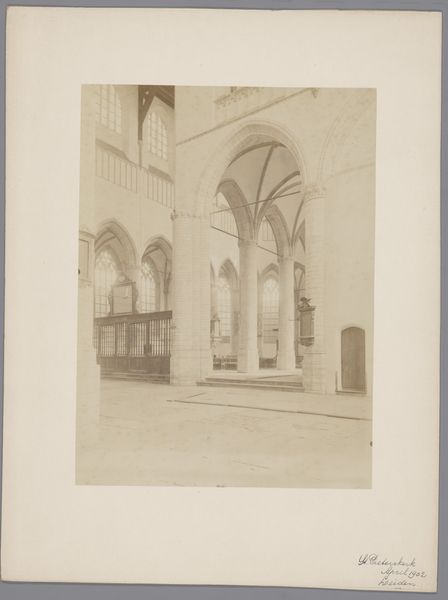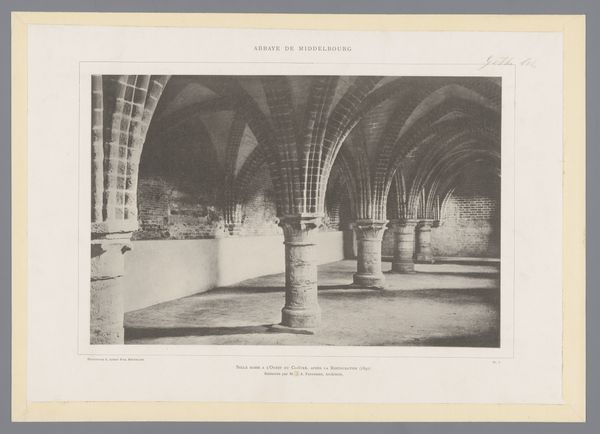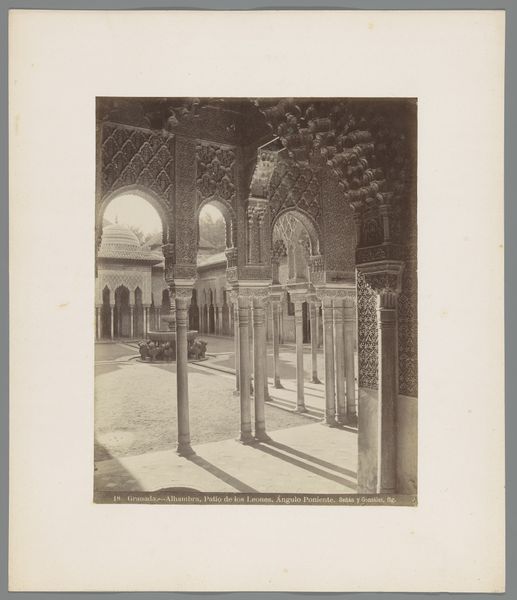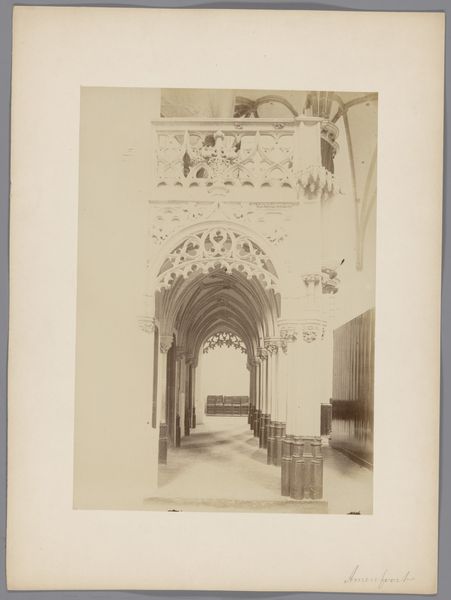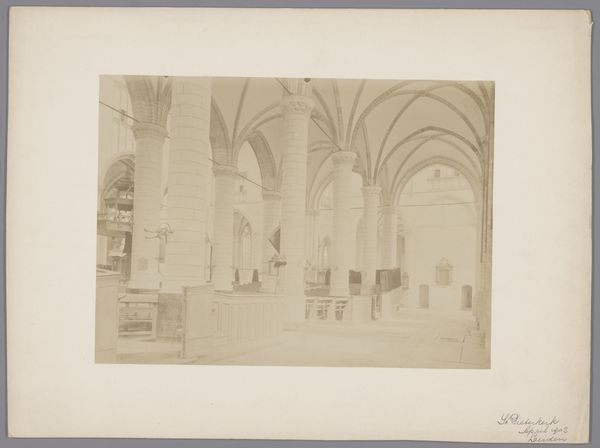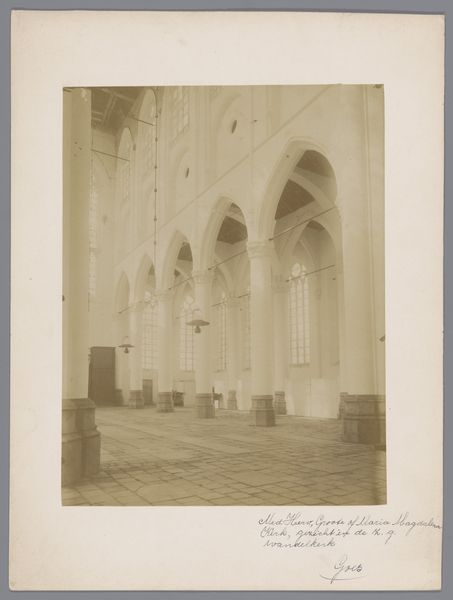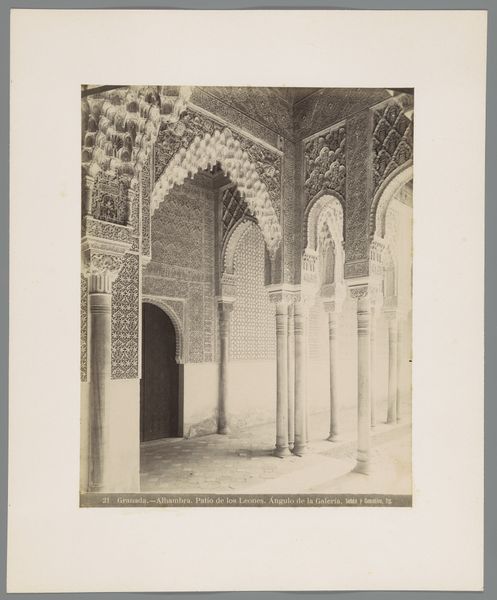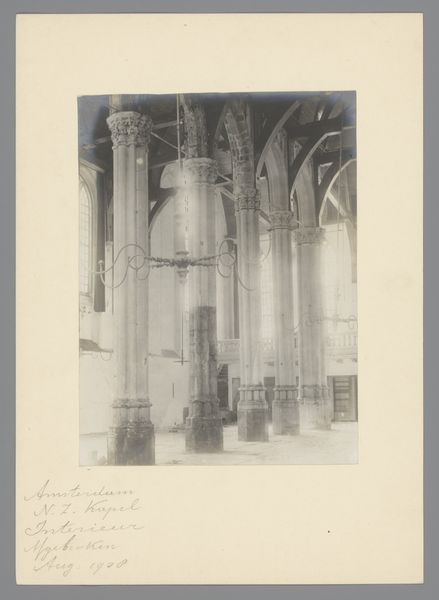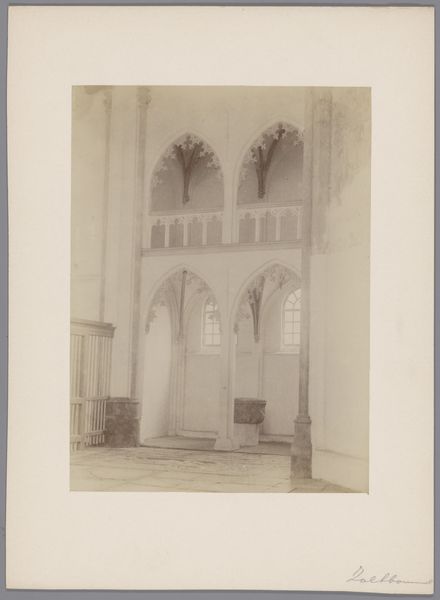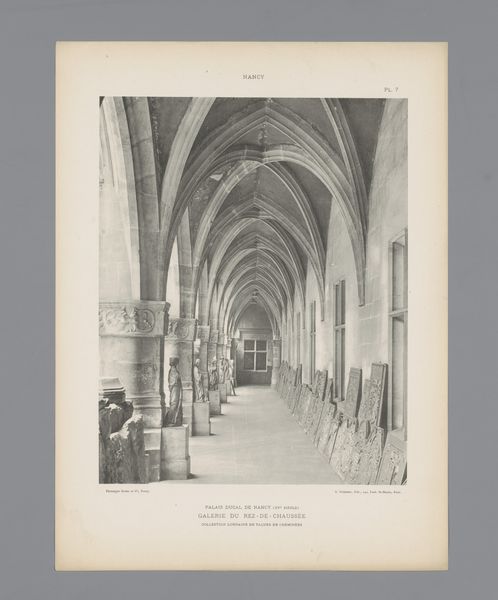
Dimensions: height 268 mm, width 199 mm
Copyright: Rijks Museum: Open Domain
Editor: So, this print, "Interieur van een kapel in de Kathedraal van Laon" by Neurdein Frères, dating roughly from 1875 to 1900, has this wonderfully subdued, almost ghostly quality. The architecture is so grand, but captured in such a faded tone. How do you interpret this work? Curator: Considering it from a materialist perspective, the albumen print process itself becomes crucial. The subtle gradations, the way the light interacts with the chemicals, creates a particular image of the space, far from a detached record. Editor: In what sense do you mean, "not detached?" Curator: Well, consider the labor involved – the quarrying of the stone, the skilled craftsmanship in its carving, the work of the photographers to create this print. It presents labor that's been almost entirely divorced from this image. Do you see the traces of manual effort in the architecture? Editor: Yes, I see the columns and the arches and those look precisely designed and erected, it takes tremendous skills to pull this off. Curator: Exactly! So, we see how the consumption of photographic imagery obscures its own material origins. The ease with which we access this image now contrasts starkly with the effort involved in both constructing the cathedral and creating this photographic reproduction. The architecture also embodies the material labor of the masses to honor god, in exchange to get access to afterlife, don't you think? Editor: That makes a lot of sense. Thinking about it, I'd never considered the physical labor and socio-economic implications tied to architecture of cathedrals. Thank you for clarifying. Curator: Understanding the historical process brings context to understanding the intent and meanings of the art. Editor: Yes! Thank you for illuminating the material conditions behind this image for me.
Comments
No comments
Be the first to comment and join the conversation on the ultimate creative platform.
